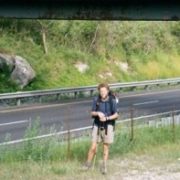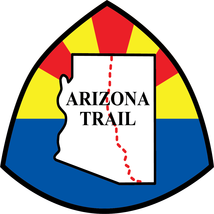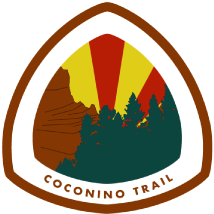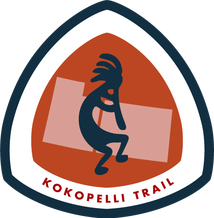Winter Camping Tips
Winter camping offers it’s own set of challenges. The following is a summary of things to consider when venturing out into the wilds during the winter season.
One of the first things to consider is travel is slower so distances covered are less. Plan to reduce your mileage goal by around 50% to 60%. Because of limited daylight there are fewer hours in the winter. Everything takes longer to do from setting up your shelter to filtering/melting ice for water and, even taking a shit.
So when winter camping or even just hiking remember the above as well as the notion it takes more energy than summer hiking due to your body trying to keep warm. Speaking of warmth, getting warm and staying warm is different for everyone. Through trail and error find out what system works best for you and stick to it. Keep dry by regulating body temperature and from the elements by having the proper protection. Lastly drink lots of water despite what appears to be a lack of sweating. Dehydration is as much an issue in the winter as the summer.
Clothing
Find a clothing system that works for you. Test different combination’s until you find the best one. Always dress in layers. Start with a base layer of wool or a synthetic material to wick moisture away from your body. Next you want an insulation piece to give you warmth. Again wool, fleece or down are the best options. Lastly you need to keep the elements out so a good shell jacket and pants are needed.
Make sure your shoes are water proof and insulated. Make sure gloves and boots are not too tight. Do not wear layers of thick socks; this will limit blood flow making you colder. It’s okay to use a liner sock and then a thick wool one but too many layers will work against you. Gaiters are great for keeping your feet dry and warm. When it comes to hand wear have safety cords on gloves for windy conditions and always have a back up pair. Like your layering system for your body you should have one for your hands. Hands give off a lot of heat and sweat a lot. Having a silk or polypro liner, then a insulation glove and lastly a shell mitten is a good idea.
Other items to think about are a neck gaiter, balaclava, and hat. Your main goal is to be able to quickly regulate your body temperature so you dont sweat too much keeping you drier and warmer.
Camp
As said before things take longer in the winter. Setting up camp in a storm can be down right miserable. So pick your camp spot carefully. Trees will dump snow, ice and water on you so avoid them. Be aware of avalanche danger if camped on our near a mountain.
The first thing you should do when you get to camp once digging a tent pit or cooking area is put on dry socks and insulated booties (w/ closed celled foam insoles). If youre wearing soft hiking boots like leather or some synthetic material be sure to really open up the shoe. If they freeze during the night getting into them come morning can be a painful experience. I know this personally from my Appalachian Trail hike in 2001.
Carry a snow shovel to dig a tent space and kitchen trench is always a good idea. Get creativity by digging a hole to sit or stand in if the snow is deep enough. This will keep you from having to bend over to cook. You can basically make a table/sitting area by digging trenches in the snow. Its always better to use a cold cell foam pad for sleeping since their warmer. Use your pad to sit on as snow, frozen ground or a shelter floor will rob precious heat from you.
Insulated mugs are key to winter camping. Add a Water Parka from Outdoor Research and you have a killer combination. Bring along a Nalgene type bottle and fill it with boiling water just before bed sticking it in the foot of your sleeping bag will keep those little piggies warm. Keep the fluids flowing during your time at camp. Re-hydrating and the extra heat from warm drinks will help you enjoy the trip. Limit caffeine and alcohol as both will only work against keeping warm and getting much needed sleep. Eating either your evening meal or a snack before bed will generate heat internally as the body breaks down the food.
Lastly try to keep active in camp so you dont get cold. Inactive muscles dont generate heat. Exercising or just keeping busying (moving) will help keep you warm. I like to plan my day so that I limit idle time in camp so I dont run into this issue. I usually get to camp, cook, and its right off to bed. Between camp set up, cooking, the warm food and liquids I go to bed fueled and warm.
Food and Water
As mentioned before hydration is important. Since we already covered the need for water consumption lets talk about how to make and store your water as cold temperatures once again pose problems. We mentioned the use of a parka for your water bottles or insulated mugs. Another trick is to keep your water bottles upside down so that in freezing temperatures the ice will form on the bottom and not on the opening. Most water filters are not designed for extreme cold and freezing water can damage them so be sure to flush all water from the system. Chemicals solutions take longer to active so figure in extra time when treating water. Any hoses what carry water on the filter should be free of water so they dont freeze. Think about wrapping your bladder house with insulation if you use a hydration bladder. Some drink mixes will lower the freezing temperature of your water so be careful (usually its the ones with lots of sugars). Try nuun which has no sugars.
Melting ice takes a lot of time and fuel. Be sure to bring plenty of fuel and give yourself enough time to melt enough water. A bandanna or coffee filter is handy to strain dirt and other debris from your melted water. Pots can get scorched if you just put ice in by itself. Be sure to save a small amount of water during the day to put in with the ice to save your pot.
To help limit idle time in camp keep your meals simple and easy to prepare. One pot meals are the best, easy to make, eat, and clean up. Meals high in carbohydrates provide large amounts of energy and more heat is generated burning them. Pre-packaged meals are great but if you plan on adding anything to them do it at home and repackage the finished meal in a Ziploc. Doing this will save you from doing the work in camp when its cold and dexterity is limited. If you can manage try eating throughout the day. This will keep a constants supply of energy without highs and lows, and keep you warm all day long.
WINTER SHELTER
When it comes to stetting up your tent in the winter there are many things to consider but before you can set it up or even go out in the cold you must figure out the best tent for the conditions. If the weather is mild enough and there isnt going to be high winds you can sometimes get away with a three season tent. So will not hold up to strong winds or may offer too much ventilation. Be smart and select your gear carefully.
There are a few things you can do to help minimize the effects of the wind and make sleeping more comfortable. The first thing is to pick a sheltered location to camp that will help eliminate strong winds and other harsh elements. The second thing is you can dig a pit to set your tent up in. Most times a couple of feet is fine but if the weather is really bad you can dig deeper if the snow pack is deep enough. Dont go too deep as you might get buried alive and you run the risk of damaging any vegetation below you. You can also dig out under your tent fly to make more room for gear and cooking. Be sure to firmly pack down both areas before set up. You will sleep more soundly and hopefully wont wake up with a large dent below you.
Another concern you have to think about is staking down your tent. Regular tent stakes usually wont work in snow and you need to either use snow flukes or find logs or rocks as anchors for your tent. Some times you might even have to use both. On other anchoring system is to fill a stuff sack or some other type of bag with snow in place of a log or rock. Attach these to your tie-outs and then bury them in the snow. Add extra snow on top and pack it down and your good to go. If you’re back-country skiing you can use your skis as stakes.
DURING the DAY
There are a few key things you can do doing the day that will make your winter trip more enjoyable and comfortable. The first is regulating your body temperature so that you dont sweat too much. Wet cold clothes will rob you of body heat through evaporation. Remove layers before you get hot and add them before you get cold. With this said a lot of people leave camp with too much on and then get warm really fast. Then they think Geez, Im getting warm but I dont want to stop I just got going! The result is wet cold clothes. Start with less than you think you need as youll be warm enough soon. When you stop you might not be cold but before you know it you will be and it will take even more energy to get warm again. Prevent this buy putting on warm insulating layers when you stop.
Next be sure to eat regularly. This will serve two proposes. The first being you wont have to stop for an extended lunch where you run the risk of getting cold and two youll always have energy as youll never be too hungry. All that digestion will create heat helping to keep you warm too.
The last thing is to keep water easily available. Keep a bottle on your hip belt or use a hydration bladder so you dont have to stop to have a drink. (Be sure you insulated the bladder hose and keep it inside your jacket to keep it from freezing. Also be sure to have a locking valve on the mouth piece. You dont want it to leak and get you all wet or lose all that water. Water is hard to come by in the winter).
A couple other things to think about are listening to your body and addressing cold feet or hands before they become a problem. This is when its good to stop. You might want to have hand warmers where you can get at them easily or carry a hot liquid in a thermos, which you made in the morning while in camp. Remember sun screen and lip balm. If its extremely cold you can smear Vaseline on your exposed skin. It will help prevent wind burn and dry/cracking skin.
IN CAMP
AT NIGHT
There are quite a few things you can do to at night to keep yourself and your gear from freezing. Most everyone has heard of hot water bottle in the foot of their sleeping bag trick. Not so many have heard of the hot water bottle inside ones boots trick and woke up to two frozen objects that are more like blocks of ice than hiking boots. Put hot water bottles in each boot then stuff them in a stuff sack. You can then either put them in the foot of your sleeping bag or between your bag and your foam pad. This goes for any other water bottles you might have. This will both keep them warmer and help drain lactic acid during the night. One last trick is to remove your insoles and put them inside your bag. It will help keep your feet warmer in the morning until you can get moving again.
Youll note I said foam pad and not air pad. Pads that supply cushion by use of air are cold and rob heat from the users body during the night. Use a foam one instead or maybe two. Other ways of keeping warm include use of a silk liner or bivy sack. There are also vapor barriers, space blankets and cloth liners available. Vapor barriers are tricky as you only want to use them if its below freezing. If its not it will trap moisture inside and your bag will get wet.
A vast amount of heat is lost through ones head so be sure to cover it up at night. Stocking caps, balaclavas or a top with a hood on it are great ways. The other way is to use the draw cord on your bag to cinch the opening so only your mouth, nose and eyes are exposed. Be sure not to breathe inside your bag while doing this as moisture will be trapped inside and cause your bag to get wet. Another way your bag can get wet is from trying to dry wet clothes inside it while you sleep. Dont, simple as that. If you followed the tips above for regulating body temps hopefully you wont have anything to dry. I will keep my morning clothes in my bag to ensure their warm in the morning but thats it.
If you havent figured it out by now the key to this section is moisture and condensation. Do your best to eliminate them where ever and when ever possible. This goes for your tent too. Every time your breathe you give off moisture inside the tent. It will build up and either freeze or drip off the walls on to you. Four season tents are well sealed so open up the door a few times during the night when youre rolling over and help release some of that warm moist air.
Lastly be efficient while in camp. Limit the number of times you have to take off your gloves, light the stove, get in and out of your bag. Being efficient will help reduce heat loss and energy wasted. Going to bed soon after eating will give you warmth from all the digestion.
IN THE MORNING
One of the best things I have found for any season is to go to bed prepared for the morning. If you do a little extra at night your morning choirs will be that much easier. Pack any items you will not need in the am before you go to bed. As you pack be sure to also pack the same way every time so finding an item is always easy. No one is happy when they have to remove every piece of gear from their pack to find one item.
Try to retain as much heat as possibly by doing those choirs from the comfort of your bag. Note, Im not suggesting you cook in your tent. Leave the cooking to be done in the vestibule but while still in your bag if possible. Lastly, as you pack think about what items you might need during the day. Keep them towards the top of your pack, without compromising the ideal weight distribution so they are easily accessed throughout the day.
Other Helpful Tips
If you dont use them consider using hiking poles. Not only do they help with balance they can be used to add options to tent set up configurations and help take better pictures with items like The Stickpic.
Traction devices like instep crampons or Yaktrax will add confidences and save your ass from bruising.
If your jackets and pants do not have pull cords on the zippers add them so you can operate them with gloves and mittens one.
Know when sun down and sun up is.
Cold kills battery life so keep them warm when ever possible. Yes, yet another item to put inside your bag at night. Keep your camera close to your body during the day if you can. Exterior pockets dont prove much warmth.
When making your menu think about items that might freeze or take longer to cook in extreme cold. You’d be amazed what will freeze if it’s cold enough.
If you’re taking medicine ask your doctor if the cold will affect it or your symptoms.
Think about taking an avalanche awareness class too.
Know the area youre hiking in. Leave a note with your plan. Carry a map and compass (and know how to use both). Be smart and enjoy the wonders of winter camping!





























thanks for the tips.. getting ready for my trip to Yosemite. This will come in handy for a first timer!
Cool blog!
[WORDPRESS HASHCASH] The poster sent us ‘0 which is not a hashcash value.
Thanks Veronica.